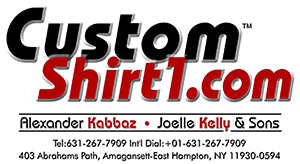Shirt & Blouse Fitting Series Part 2 - Proper Shoulder Shape
| Your Best First Impression | ||||||
Step 1A: Properly Fitting ShouldersPart 1 - Shoulder Shape
|
||||||
| The majority of men will opine that the most important aspect of a shirt is the collar. Women cite proper fit of the bustline & neckline. Neither could be further from correct. The overarchingly critical component of any top garment is the design of the shoulder. | ||||||
|
In blouses and shirts the shoulder piece is called the yoke, atop which sits the collar and from which drape the front, back, and sleeves. Unless the shape of this "hanger" is correctly designed in relation to the shape of the wearer's shoulders, no degree of fussing with the other parts will serve to provide a proper and attractive fit. Why is that? Akin to DNA or fingerprints, virtually no two persons have the same shoulder shape. Consider for a moment all of the possible differences using the following criteria:
|
 |
|||||
| The animation demonstrates the major differences in shoulder shaping. The transparent blue shapes are the shoulder piece. The red outline overlays show the "normal" shoulder shape to offer comparison with the shape variations. The best way to view is to watch solely the woman a couple of times and then the man. The woman is demonstating the normal, forward, and backward curvature of shoulders. The man is showing the normal, forward, and backward neck positions and the special adaptation for large shoulder blades. Having difficulty with the animation? Scroll down for large still shots ... or click here to open a SuperSize Animation in a new window. | ||||||
|
In this basic overview of the importance of the shoulder piece, I'll explain - mostly visually - the primary criteria of shape. Suffice it to say that designing for the secondary criteria mentioned above is self-evident as follows:
|
||||||
|
As for the primary design criteria ... If the shoulders curve forward, the yoke must be designed to curve forward. Rearward curve? Rearward yoke. Different curves? Different yoke curves on each side. Large shoulder blades require a different method. Here, the rear side of the yoke must be curved (enlarged) outward to allow extra room for the blades. OK ... CONFUSING! I get it. It would take thousands more words to try to convey this verbally so let's get to the visuals. Here's what you need to know:
|
Master Pattern |
|||||
| For those who would prefer to see each frame in still mode, click any of the thumbnails below and a large view will open. | ||||||
|
IMAGE ONE The first iteration illustrates Average Shoulders and Average Neck Placement on both the woman and the man which, solely for purposes of explanation, I shall term "Normal". Note how the yoke line fairly matches the line of the shoulders. |
IMAGE TWO The second illustration shows the woman with forward curving shoulders and the man with his head/neck forward of center. Note by comparison to the red "normal" yoke outline that the woman's yoke has been curved toward the front. The change in the man's yoke is harder to spot. Look carefully at the hole to which the collar will be attached. It has been moved forward of where the average hole shows on the red "normal" yoke outline. |
IMAGE THREE The third photos show the woman with rearward curving shoulders and the man with his head/neck farther toward the back. Note that the woman's yoke has been curved toward the rear. The change in the man's yoke is again hard to spot. Again, look carefully at the hole to which the collar will be attached. It has been moved rearward of where the average hole shows on the red "normal" yoke outline. |
IMAGE FOUR In the final frame, the woman's shoulders and yoke have returned to normal. The man is shown to have large shoulder blades. Here the change is easy to spot. The rear side of the yoke has been curved outward mirroring the outward curve of the shoulder blades ... and the neck hole is normal. |
|||

|

|

|

|
|||
| Click Any Image To Enlarge Then Click the Four-Arrow Icon To Supersize | ||||||
| That's pretty much the whole of it as far as a general overview. When it gets to the specifics of each person's body shape, combining the various elements can become a bit more complex. And to add an important caveat, the old "more than one way to skin a cat" applies here. Suffice it to say that when it comes to creating attractive bespoke shirts, each tailor will have a different manner of accomplishing their goals. As this is a difficult concept, I would be happy to answer any questions you might have. Just contact me here. | ||||||
|
A bit of Q&A to answer the most frequent questions on this subject: Q: Which is a better design - the One Piece Yoke or the Split Yoke? Q: What is the root of the difference between shirt/blouse tailors and outerwear tailors?
|
||||||
|
As always, thank you for reading. Questions gladly answered here. Copyright © 2019 Alexander S. Kabbaz - All rights reserved. |
||||||

